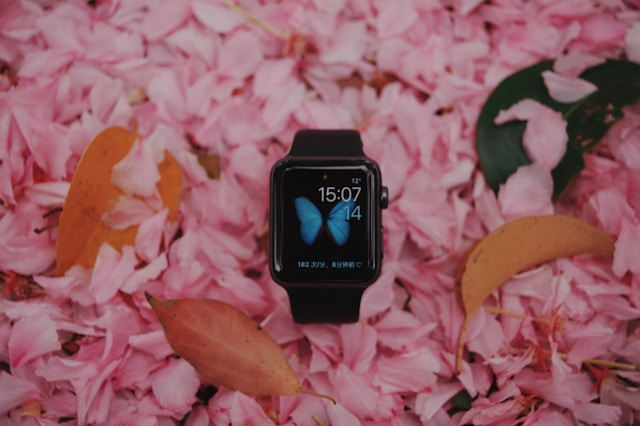At Wellthy Soul, wearable fitness trackers have become essential tools for monitoring health and fitness metrics, with heart rate (HR) tracking being one of the key features. Knowing how to find your heart rate on your device helps optimize workouts, manage stress, and track overall heart health. Here’s a step-by-step guide on how to find your heart rate on five wearable trackers.
1. Apple Watch
This is the most common device used by Wellthy Soul clients. The Apple Watch integrates seamlessly into the broader Apple ecosystem. With real-time health notifications, the Apple Watch allows users to track their heart rate and receive alerts about abnormal readings. It’s a great choice for those seeking a stylish, multipurpose smartwatch with strong health monitoring capabilities.
Steps:
- Open the Heart Rate app – Press the Digital Crown on your Apple Watch to access the Home Screen, then tap the Heart Rate app.
- View your current heart rate – Your heart rate will be automatically measured and displayed on the screen.
- Check resting or active heart rate – Scroll down to see different heart rate measurements such as resting or workout heart rate.
- Set up heart rate notifications – Go to the Watch app on your iPhone, navigate to Heart, and enable high or low heart rate notifications.
2. Fitbit
Fitbit is popular for its user-friendly interface and excellent fitness tracking. Known for its intuitive heart rate zones, Fitbit devices offer detailed insights into daily activity and heart rate trends. It’s perfect for individuals who want simple access to health data without compromising on depth. Fitbit is the second most-used device among the Wellthy Soul family.
Steps:
- Access the Today dashboard – Open the Fitbit app on your smartphone, and you’ll land on the Today dashboard.
- View your heart rate – Your real-time heart rate is displayed under the Heart Rate section. If you have a display model like the Charge or Versa, you can also scroll through the watch’s dashboard.
- Check detailed stats – Tap on the heart rate section for more in-depth details, including resting heart rate and heart rate zones.
- Customize heart rate zones – Adjust heart rate zones by navigating to Account > Heart Rate Zones in the Fitbit app.
3. Garmin Wearables
Garmin is a favorite for serious athletes due to its advanced metrics and customization options. These wearables offer detailed heart rate monitoring tools, making it ideal for those focused on performance. With personalized heart rate zones and robust data tracking, Garmin is designed for those who want precision and control over their fitness journey.
Editorial Comment: This is my preferred tracking device, though I miss the functionality of the Apple Watch.
Steps:
- Open the Heart Rate widget – Swipe or press the button on your Garmin device to scroll through widgets until you reach the Heart Rate widget.
- View real-time heart rate – Your current heart rate and a graph of heart rate trends over the past four hours will be displayed.
- Check in the Garmin Connect app – Open the Garmin Connect app on your phone. Navigate to Health Stats > Heart Rate for a breakdown of your heart rate data.
- Enable alerts – In the Settings of the Garmin Connect app, enable alerts for abnormal heart rate readings.
4. Whoop Strap
Whoop takes a unique approach to heart rate tracking by focusing on recovery, strain, and performance optimization. Unlike most wearables, Whoop lacks a screen and relies entirely on its app for in-depth analytics. This makes it ideal for athletes who prioritize recovery and want a streamlined, distraction-free wearable.
Steps:
- Open the Whoop app – Since Whoop doesn’t have a screen, heart rate data is found in the Whoop app on your phone.
- Go to your Overview page – Check the Overview section for real-time heart rate data.
- Review detailed stats – Tap the heart rate section for more insights, including resting heart rate, HRV (Heart Rate Variability), and heart rate throughout the day.
- Set strain goals – Use the heart rate data to manage strain by setting custom goals.
5. Polar Wearables
Polar is known for highly accurate heart rate monitoring, especially for endurance athletes. Runners, cyclists, and endurance athletes favor Polar for its advanced insights into training load, recovery, and heart rate variability. Polar is ideal for those who need precise data to optimize long-term fitness goals. This is the final device included in How to Find Your Heart Rate on Five Wearable Trackers.
Steps:
- Open the Heart Rate menu – Press the button on your Polar device to access the menu, then scroll to Heart Rate.
- Check heart rate in real-time – Polar watches will display your heart rate on-screen when you’re wearing the device.
- Sync to Polar Flow – For deeper insights, sync your data to the Polar Flow app on your phone. You can analyze heart rate trends and training load.
- Set HR zones – In the Polar Flow app, go to Settings > Physical Settings to adjust heart rate zones.
Why Heart Rate Monitoring Matters
Tracking your heart rate gives you valuable insights into your fitness level and overall health. It helps you:
- Optimize workouts: Stay in the right heart rate zone for fat burning, cardio, or peak performance.
- Manage stress: Monitoring heart rate variability can provide insights into your body’s stress levels.
- Track recovery: Keeping an eye on your resting heart rate can signal when your body needs rest.
No matter which device you use, consistently checking your heart rate helps you make informed decisions about your health and fitness while working towards personal goals like weight loss and improved endurance.

